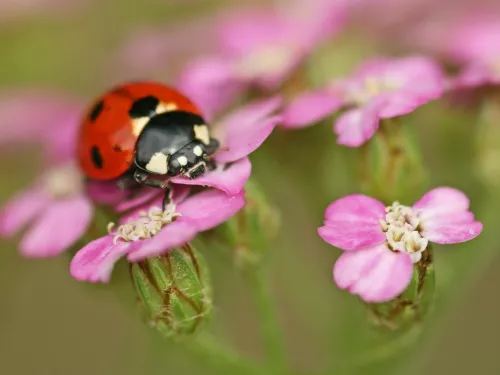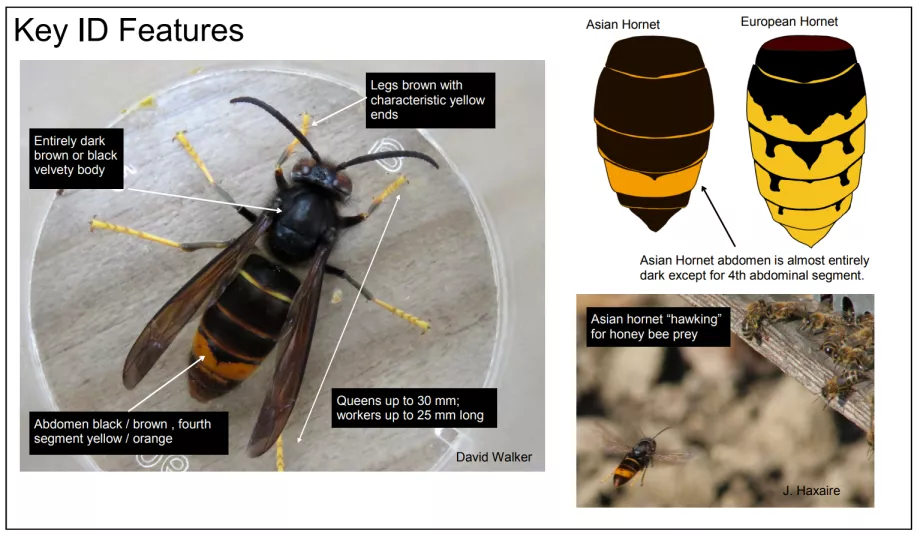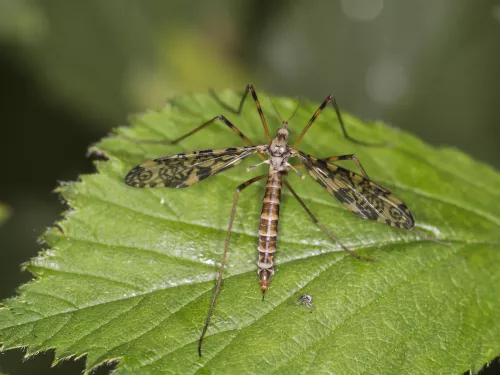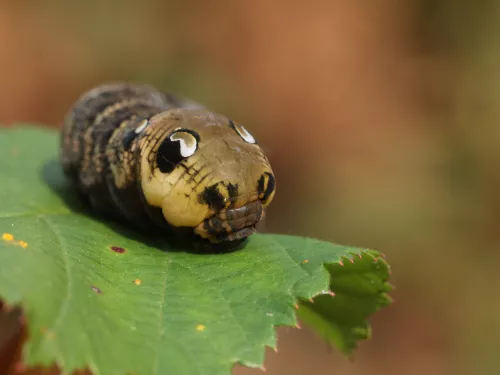Identifying an Asian hornet (Vespa velutina) in the UK can be challenging because they can look similar to some native hornet and wasp species. However, there are key characteristics that can help you distinguish Asian hornets from other insects:
Asian hornets are larger than most native hornets and wasps in the UK. They are typically about 2-3 cm (0.8-1.2 inches) in length.
Asian hornets also have a distinctive colour pattern. The thorax (the middle section of the body) is dark brown or black. The abdomen (the rear section of the body) is mostly dark brown to black, with a single, thick, yellow-orange band located near the posterior end. Native European hornets have multiple yellow bands on their abdomen.
Asian hornets also have yellow-orange legs, which are noticeable, especially when they are in flight. Whereas our native European hornet has only brown legs.
Download the PlanBee Asian Hornet Identification Guide
How to monitor Asian hornets in your garden
Our nature reserves are too large to monitor Asian hornet populations and we do not have the resources to check traps on a daily basis which is why we need your help to stay on top of the situation. Here's what you can do.
We’ve already had reports of many sightings in the Folkestone and Dover area so it’s important that residents looking out for nests and report any sightings. As the leaves on our trees fall, it should be easier to spot the nests and report them to the relevant authorities.
Asian hornets need regular monitoring to ensure they don't enter the UK. That's why we're asking Kent residents to stay alert and set-up monitoring traps in your gardens (guide link below). By creating or buying a trap and checking it daily, you can help report sightings and reduce numbers next year.
Download the guide to monitoring Asian Hornets from the Animal & Plant Health Agency
If you think you have spotted an Asian hornet in your trap, put the entire contents of the trap into a tightly sealed freezer bag and place into the freezer for 12 hours before opening. Make sure to report all sightings to the Asian Hornet Watch app on iPhone / Android or using the online recording form. Thank you for your support.
References





